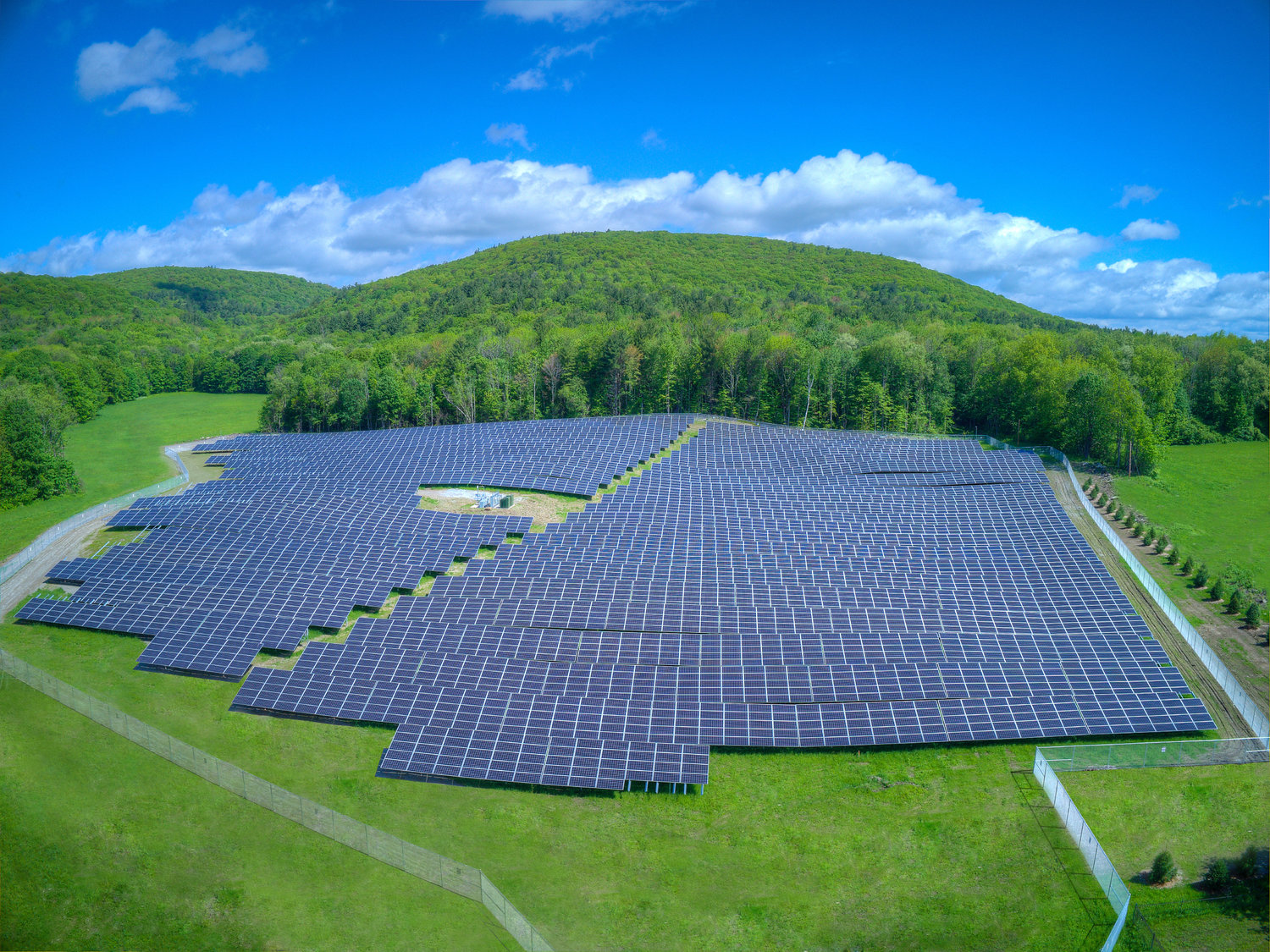The idea of using clean power is widely accepted. Solar farms are an increasingly popular solution to help combat climate change. Compared to other power generation methods they make good neighbors – emitting no emissions or noise. They can be unobtrusive and very flexible in their install sites. This all makes them a more attractive option to communities than just about any other power generation option.
Massachusetts gets most of its energy from natural gas, which means energy prices here are tied to the volatile price of petroleum. Residents here pay a higher percentage of their income for energy than most other states. Solar farms are cost effective because they enjoy greater economies of scale than roof-mounted arrays on buildings.
In terms of siting, most people can agree that putting solar panels on a capped landfill or a parking lot is a no brainer – and there are even state programs in place in Massachusetts to encourage that. Many arrays have already been built on such sites. Landfills host solar farms in Chicopee, Hudson, Amesbury and there’s an array going up on the decommissioned Mt. Tom Coal Plant in Holyoke, to name just a few projects. There aren’t many of these so-called brownfield sites left, but we still have a long way to go on Massachusetts’ greenhouse gas reduction targets, so it’s important to evaluate sites that involve tree clearing for solar farm installations.
Massachusetts is both densely populated and heavily forested. It’s the fourth most densely populated state in the US, and has 62% forest cover. According to the Boston Globe, “…nearly 50,000 acres of forest — at a pace of 13 acres a day — between 2005 and 2013…” was used for new housing developments. Any trees cleared for solar projects would not be on conservation land. Solar farms would be hosted on private land designated for agricultural or commercial purposes. If it’s not used for solar, it will probably be used for something else.
The good news is all solar farms, even those that involve cutting down trees, help fight climate change. In fact, solar farms are a more powerful way to fight climate change than trees are. If you compare carbon offset per acre, solar wins out. One acre of solar in Massachusetts offsets about 134 tons of CO2 per year per acre, nearly ten times as much as temperate forest lands, which removes 15 tons of CO2 per year per acre.
In addition to climate change, we need to consider the impact land use has on the people living there. Forests provide recreational space for residents, maintain healthy ecosystems and habitat for wildlife, filter air and water, protect against land erosion, and provide a buffer against floods. For those of us that want to protect forests, it’s important to look at the big picture – we’ve already seen changes in our temperate forests due to climate change. This will only get worse in the future – we can expect changes in weather patterns that native species will have trouble adjusting to. If sacrificing a few acres of trees will help preserve all of our forests, it seems like a worthwhile trade.
Then there’s the fact that we can recover the land used for solar arrays after their useful life has ended. The panels can be replaced or arrays removed and forests allowed to return. Massachusetts has not always been as heavily forested as it is now – historically the state has had heavy industrial use. Most of the state’s forests are only 80 years old. In the 1800s, Massachusetts had used most of its timber and was down to only 28% forest coverage. We’ve bounced back since then, regenerating the state’s forest. Finally, if we only built solar farms in wooded areas, just 6,000 acres of solar out of the state’s 3 million acres of trees – that’s only 0.2% – could supply all of Massachusetts’ power needs.
We’re in a position where we need drastic changes and actionable solutions now if we want to avoid serious climate change. Community solar farms boost the local economy, reduce pollution, help regulate energy prices and bring cost savings to residents. Most sites for community solar are not on forested land, and proposed arrays would only require a small amount of acreage. That land would offset more carbon with a solar farm than it can now and it’s better put to use for solar than for other development. Maybe most importantly, moving to clean energy will help preserve our forests in the long term.
SEE FOR YOURSELF
Community Solar Makes Solar Available to All
Ready to go Community Solar?
See if Community Solar is available in your area and schedule an appointment.
SCHEDULE YOUR FREE PHONE CONSULTATION






























